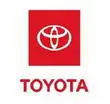Anti-fog agents are additives that prevent the formation of fine water droplets on the surface of transparent plastic films, sheets, or boards in humid environments, which cause surface fogging. When such films, sheets, or boards fog up, they obstruct light transmission. For instance, in plastic greenhouses, fogging can significantly reduce light intensity, affecting plant growth.
(1) Mechanism of Anti-fog Agents To prevent fogging, anti-fog agents are added to plastics. These are surface-active agents with hydrophilic groups that orient themselves on the plastic surface, with hydrophilic groups facing outward. This allows water to easily wet and quickly spread the condensed fine water droplets into an extremely thin water layer or enable larger water droplets to flow down the film. This prevents light scattering caused by small water droplets, thus avoiding fogging.
(3) Classification of Anti-fog Agents Based on the method of adding anti-fog agents to plastic, they can be classified into two types: internal additive and external coating types.
Internal Additive Anti-fog Agents These are added as additives during the compounding process, incorporated during plasticization and molding. Their characteristics include long-lasting effectiveness and low loss. However, they may not work well with highly crystalline polymers.
External Coating Anti-fog Agents These are applied to the surface of the product to achieve anti-fog effects. They are typically dissolved in organic solvents or water and then coated onto the plastic surface. Their advantages include ease of use and low cost, but they are easily washed or wiped off, resulting in poor durability.
(3) Usage of Anti-fog Agents Anti-fog agent effectiveness is not comprehensive and includes four types: initial anti-fog, low-temperature anti-fog, high-temperature anti-fog, and long-lasting anti-fog. In practical applications, it is challenging for a single anti-fog agent to possess all four effects. Therefore, multiple agents are often combined based on the specific anti-fog requirements of the product.
The main composition of anti-fog agents consists of partial esters of fatty acids and polyols. Commonly used polyols include glycerol, sorbitol, and their anhydrides. Fatty acids are saturated or unsaturated C-chain acids. Generally, mid-chain fatty acid esters provide good initial anti-fog effects, while long-chain fatty acid esters offer better long-lasting anti-fog performance. In practice, anti-fog agents are composed of mixed esters from various acids.






